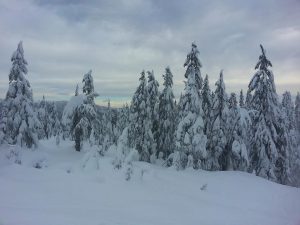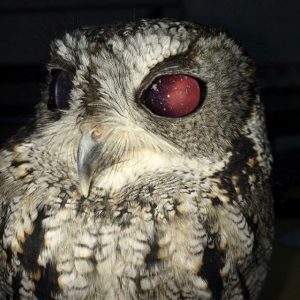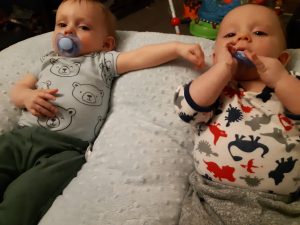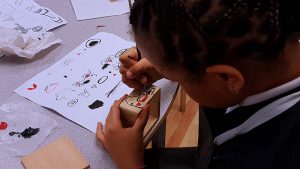Write a blog that hyper-links your research on the characters in GGRW using at least 10 pages of the text of your choice.
P.16-26 (note that I am using the Kindle edition for reference, so these pages may be slightly off)
I’ve yet to come across a novel that makes more use of the literary device of allusion than Thomas King’s Green Grass, Running Water. While there were several names whose reference I understood immediately, there were many others that were vague to me, and there were even more that I didn’t even realize were a reference at first. However, it doesn’t take long for readers to understand that nothing in GGRW is in there without reason. King is a careful writer and even the smallest characters have names which were chosen quite consciously.
On page 16, we are introduced to the character of Dr. Joe Hovaugh, a reference to the Christian deity Jehovah. He sits at his beloved massive wood desk, which reminds him of a “tree cut down to a stump” (King 16). Here, it seems King is referencing the anthropocentrism of modern Western Christianity, with its belief that all of nature was created to serve man. As the eponymous Jehovah says to man, “Rule over the fish in the sea and the birds in the sky and over every living creature that moves on the ground” (New International Version, Genesis 1:28). Even the grounds of Hovaugh’s hospital are described like the paradise of Eden, with Hovaugh reigning over them like God reigns over his creation.
Behind the wall, the willows were beginning to get their leaves, the cherry trees were heavy with pink and white blossoms, the evergreens stood dark and velvet against the stone. Yellow daffodil lined the front of the flower beds, and the wisteria and the lilacs around the arbors were greening up nicely. Dr. Hovaugh sat in his chair behind his desk and looked out at the wall and the trees and the flowers and the swans on the blue-green pond in the garden, and he was pleased. (King 17)
In the next scene, we meet Alberta Frank for this first time. Alberta, a university professor, has the namesake of the province in which the story is set. Meanwhile, the province itself was named after Princess Louise Caroline Alberta, daughter of Queen Victoria and Prince Albert. Princess Alberta was also the wife of Canada’s Governor General between 1878-1883. At first I thought this to be ironic- why would a strong, proud Indigenous woman share a name with a colonizing force? Upon research, however, I realized that there is more to it. Princess Alberta is considered to be somewhat of a rebel in royal terms, often described as “unconventional, determined and ‘dreadfully’ contradictory” (Seskus). She smoked,she sculpted, she dressed unconventionally, and she spoke up for women’s rights. She was also an individual who shunned the expected dating life of a princess, rejecting royal suitors to marry a man who was a politician and a writer, but who was not considered a royal. Thomas King’s Alberta also follows her own path when it comes to courting, choosing to casually date two men, and preferring to start a family with neither. Furthermore, the provincial motto of Alberta is fortis et liber (“strong and free”). Alberta, a successful and educated woman, is certainly a representation of a strong and free individual.
In Alberta’s first scene we also meet several of her students. The names of her students are Henry Dawes, John Collier, Mary Rowlandson, Elaine Goodale, Hannah Duston, and Helen Mooney.
Dawes is named after the U.S. Senator and creator of the Dawes Act, a land grabber who essentially stole over 90 million acres of Native land. He strongly believed in the assimilation of Indigenous people, attempting to carry it out through the Dawes Act.
Collier is named after the U.S. Commissioner of Indian Affairs during the 1930’s. Unlike many other politicians of his time, Collier did not believe in the assimilation of Indigenous people, but instead “encouraged self-sufficiency among tribes and provided them with the land rights, religious and educational freedom, and organization to achieve it” (Your Dictionary). He was committed to preserving Native land, Native culture, and Native history, an attitude reflected in his creation of the Indian Reorganization Act, which helped to conserve Indian land while also extending the rights of America’s Indigenous people.
Mary Rowlandson’s namesake is the British American colonial figure who is perhaps most famous for being held captive by members of the Narrangasett tribe, and then writing an account of her experience, a piece of writing in the colonial literature/captivity genre. Rowlandson’s capture was the result of tensions between Native Americans and European settlers, in regards to land rights. Prior to Rowlandson’s capture, three members of the Wampanoag tribe had been executed by the Plymouth Colony, while many other Native Americans were suffering from famine and disease due to land encroachment.
Elaine Goodale’s name comes from the missionary teacher who wrote about her experiences with Native Americans. While Rowlandson’s writing portrayed Indigenous culture in a more negative light, Goodale was considered to be somewhat of a voice for Native rights, though she was a firm believer in assimilation.
The real-life Hannah Duston was an English colonist who was taken captive during King William’s War. With her fellow captives, Duston killed and scalped 10 of her Indigenous captors, including six children. Later on, Duston
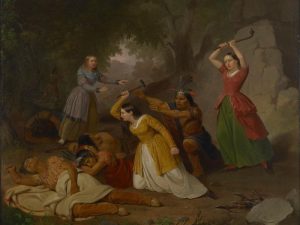
Julius Brutus Stearns’ depiction of Hannah Duston and her infamous actions
was often portrayed as a righteous woman who did what she needed to do in order to escape her “savage” captors.
Lastly, there is Helen Mooney, whose name does not seem to directly (or obviously) correlate to any particular figure. Jane Flick suggests that it may be a reference to the ethnographer James Mooney, who studied Cherokee culture. Flick also suggests that the name could be a private joke.
It is no coincidence that the behaviors of Alberta’s students reflect the actions and attitudes of their namesakes. Henry Dawes- named for a politician who showed little care for Indigenous affairs- is asleep during class, and when forced to answer a question, replies with a vague, uninformed response. John Collier, on the other hand, speaks up frequently, asking questions and reacting to Alberta’s teachings. Mary Rowlandson and Elaine Goodale, both named after New England writers, spend the class huddled together. Rowlandson even asks if it’s necessary for her to know all of the names of the figures in Alberta’s lesson, perhaps a nod to the real-life Mary Rowlandson’s view of Native Americans as nothing more than barbaric savages.
While I admit that many, if not most, of King’s references would go over my head had I not done extra digging, I certainly find myself having more appreciation and respect for Thomas King now that I have this knowledge. Not only do I better understand why one can criticize Northrop Frye for his idea that writing is a closed system (how could anything be closed when there are so many external references?), but I also feel like King is demonstrating “Coyote Pedagogy”. He does not give us the answers to who these characters are or where their names come from, but he requires us to do the searching, ultimately making it all that more meaningful.
Works Cited
Cutter, Barbara. “The Gruesome Story of Hannah Duston, Whose Slaying of Indians Made her an American Folk ‘Hero’.” The Smithsonian. 9 Apr. 2018. Web. 18 Mar. 2019.
“Dawes Act.” Our Documents. N.d. Web. 18 Mar. 2019.
“Elaine Goodale Eastman.” PBS. N.d. Web. 18 Mar. 2019.
Flick, Jane. “Reading Notes for Thomas King’s Green Grass, Running Water.” Canadian Literature 161/162 (1999). Web. 15 Mar. 2019
“Indian Reorganization Act (1934).” The Living New Deal. N.d. Web. 17 Mar. 2019.
“John Collier Facts.” Your Dictionary. 2010. Web. 17 Mar. 2019.
The New Testament: New International Version. Bible Gateway. N.d. Web. 19 Mar. 2019.
Rowlandson, Mary. The Sovereignty and Goodness of God Together with the Faithfulness of His Promise Displayed: Being, a Narrative of the Captivity and Restoration of Mrs. Mary Rowlandson. Project Gutenberg. E-edition. 1682/2005. Web. 18 Mar. 2019.
Soniak, Matt. “How Canadian Provinces and Territories got their Names.” Mental Floss. 30 June 2014. Web. 17 Mar. 2019.
Seskus, Tony. “5 Things about Queen Victoria’s Rebel Daughter, Alberta’s Namesake Princess.” Calgary Herald. 17 May 2015. Web. 17 Mar. 2019.
White, Lynn. “The Historical Roots of our Ecological Crisis.” Science 155. Number 3767 (1967): 1203-1207.

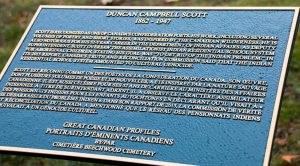

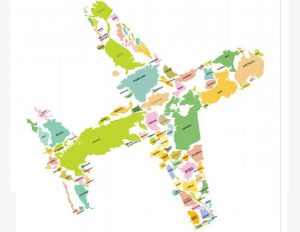 Lexis Mellish discusses her quest to find a community where she could “feel a part of something”.
Lexis Mellish discusses her quest to find a community where she could “feel a part of something”.